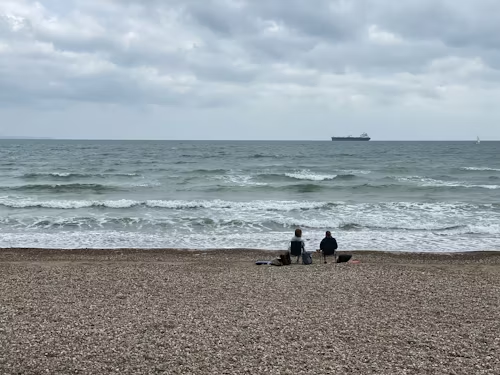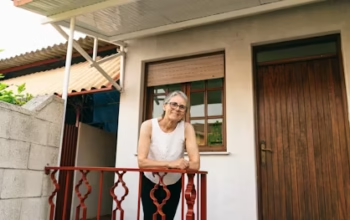
Brighton wakes in layers. First, the gulls. Then the slap of waves against the shingle. Somewhere in between, the quiet shuffle of early risers claiming a slice of dawn before the city stirs. That’s when you notice them—figures by the pier, moving in slow arcs that seem to echo the tide. It’s not a dance. Not exactly exercise either. It’s Tai Chi in Brighton, and if you pause long enough, you’ll see it’s the kind of ritual that makes the town feel stitched together by more than just sea air and salt.
I stumbled across it by accident. A Tuesday. Cold enough for fingers to go numb, yet there they were—ten or so people swaying in rhythm with something invisible. One man in a red scarf, eyes closed, palms floating as though he was holding the horizon itself. A woman in jogging shoes, balancing as if her bones remembered the sea was underneath her all along. I watched longer than I meant to. It didn’t look like much… until it did.
The Radical Act Of Moving Slowly
Speed is Brighton’s undercurrent. Buses rattling past the Lanes. Cyclists weaving toward the Marina. Cafés are stacking takeaway cups faster than the foam settles. So when you come across Tai Chi in Brighton, the slowness almost shocks you. It’s defiant, in its way. Like saying: No, I won’t rush. Not today.
The first time I joined in, I felt ridiculous. My arms are heavy, my balance off, my brain nagging at me to “do it right.” But here’s the twist: there is no perfect. The point isn’t precision—it’s presence. One step forward. One breath. And another. Each moment tugs you closer to yourself, until the background noise of life fades to just waves and breath.
A Brighton Kind Of Community
Brighton has always been a magnet for misfits, seekers, and dreamers. That’s probably why Tai Chi in Brighton doesn’t feel exclusive. I’ve seen teenagers practising next to retirees, both laughing when the wind nearly knocks them sideways. I’ve stood beside office workers in stiff trousers, musicians with headphones dangling, parents squeezing in a moment before school runs. Nobody looks the same, yet somehow, in the circle, everyone moves as one.
It’s a community without small talk. No icebreakers, no forced smiles. Just a group of strangers linked by rhythm and gravity, held together by the sea breeze.
The Sea As Teacher
Practising indoors is fine—steady floors, no distractions—but Tai Chi in Brighton belongs to the sea. The water sets the tempo. Some mornings the tide is wild, the air stings your cheeks, and your forms feel sharp, martial. Other mornings, the horizon sits flat as glass, and your movements melt into something softer, more like prayer.
One teacher I met, a wiry man with silver hair tied back, put it simply: “The ocean is my co-instructor. It reminds people they’re small, but also infinite.” He wasn’t wrong. You can’t argue with the ocean. You can only move with it.
Beyond The Myths
There’s this old stereotype that Tai Chi is for “old people.” And sure, seniors love it—for balance, for strength, for joints that no longer bend without complaint. But reducing Tai Chi to that is like saying music is only for the young. In Brighton, it’s clear the practice is for anyone who’s had enough of rushing. Students show up between classes. Artists use it as a moving meditation. One woman I spoke to swore Tai Chi in Brighton helped her stop smoking—not because it gave her willpower, but because it gave her calm.
What It Gives (Without Trying Too Hard)
Science can prove the benefits if you need that kind of reassurance. Better balance. Lower stress hormones. Sharper focus. But ask the people actually doing Tai Chi in Brighton, and you’ll get different answers.
“It makes me less angry in traffic.”
“I sleep better on the nights I practise.”
“I don’t know, I just… breathe differently.”
They’re not medical terms. They’re lived ones. And maybe that’s the point. Tai Chi doesn’t promise transformation. It just offers space.
How To Begin Without Overthinking
If you’re curious, the hardest part isn’t learning the moves. It’s showing up. Brighton makes it easy, though. Beach sessions at dawn. Park meetups. Community halls with floors that creak under centuries of stories. Some groups ask for a small fee, and others are donation-based. Nobody cares if you wobble. They care if you turn up.
And if joining feels too daunting? Start alone. Put your feet in the sand, watch the horizon, and copy a beginner video for ten minutes. The sea won’t judge.
A Practice That Lingers
Trends come and go in this town—vegan food crazes, ecstatic dance waves, kombucha on tap. But Tai Chi in Brighton isn’t flashy enough to be a fad. It doesn’t post on Instagram. It doesn’t need merchandise. It’s quieter than that. It seeps into your posture when you’re standing at a bus stop. Into your breath when you’re waiting for news. Into your ability to let go of the clenched jaw, the hunched shoulders.
It’s less like a habit, more like a companion.
The Invitation
So next time you’re wandering the seafront early, don’t just pass them by. Watch. Or better—step in. The circle will widen. The waves will keep time. And for a moment, you’ll understand why Tai Chi in Brighton from Brighton Recreational isn’t really about movement at all. It’s about remembering you have a body that longs to slow down. And a town that, in its own eccentric way, makes space for that.


